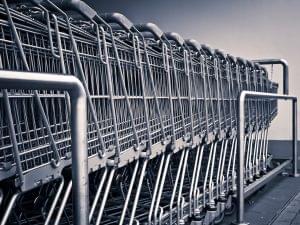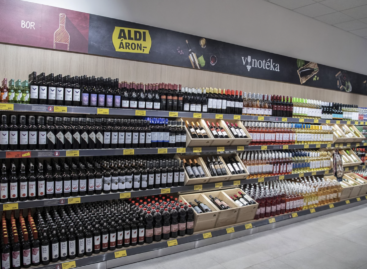Inflation stood at 3.7% in April
Slightly below our expectations, the annual rate of inflation rose to 3.7% in April. The monthly price change was +0.7%, also slightly below our expectation of 0.8-0.9%. Core inflation moderated, but at the same time it was slightly above the 4% we expected, at 4.1% in an annual comparison.
 Based on the details of the monthly price change, the KSH measured movements in the direction expected, however, the measures differed somewhat from our expectations. Vehicle fuels rose slightly more than we expected, by 3.5% compared to March, while the CSO showed a stronger-than-expected 2.4% decrease in the price of household energy. The prices of clothing items rose slightly more than usual at this time. At the same time, we expected slightly higher prices for food, in this category the CSO reported a 0.3% price increase. For services, the CSO reported a 1.3% monthly price increase, which exceeded our expectations for this category. In communications, there was a 1.2% monthly increase in prices, but at the same time, especially unlisted services rose in price significantly, by 4.2% compared to March.
Based on the details of the monthly price change, the KSH measured movements in the direction expected, however, the measures differed somewhat from our expectations. Vehicle fuels rose slightly more than we expected, by 3.5% compared to March, while the CSO showed a stronger-than-expected 2.4% decrease in the price of household energy. The prices of clothing items rose slightly more than usual at this time. At the same time, we expected slightly higher prices for food, in this category the CSO reported a 0.3% price increase. For services, the CSO reported a 1.3% monthly price increase, which exceeded our expectations for this category. In communications, there was a 1.2% monthly increase in prices, but at the same time, especially unlisted services rose in price significantly, by 4.2% compared to March.
Examining the inflation sub-data on an annual basis, food prices, which make up 30% of the basket, increased by 1%, which is partly the result of base effects and partly the result of increasingly widespread price reductions. The prices of alcoholic beverages and tobacco products with a weight of 8% within inflation increased by 3.8%, clothing items with a weight of 4% increased by 4.8%, while the prices of consumer durables representing a weight of 8% 1 decreased by .7%. The household energy price with a weight of 5% decreased by 4.5%, the combined price category of other items (medicine, personal care, cultural items, home furnishings) and fuel representing a weight of 19% increased by 3.9%, within fuel prices rose by 6.6%. With a weight of 26%, the price increase of services representing the second largest category amounted to 9.5%, which is still considered high.
Related news
The Hungarian Confederation of Economic Workers also spoke out regarding the inflation data
🎧 Hallgasd a cikket: Lejátszás Szünet Folytatás Leállítás Nyelv: Auto…
Read more >K&H: what does child inflation show?
🎧 Hallgasd a cikket: Lejátszás Szünet Folytatás Leállítás Nyelv: Auto…
Read more >The forint may remain relatively strong, even permanently
🎧 Hallgasd a cikket: Lejátszás Szünet Folytatás Leállítás Nyelv: Auto…
Read more >Related news
Bread and wine for 399 forints, mulled wine for 450 forints: ALDI opens its own downtown Christmas market
🎧 Hallgasd a cikket: Lejátszás Szünet Folytatás Leállítás Nyelv: Auto…
Read more >MBH Analysis Center: Hungarian tourism is soaring – further growth is expected in the hotel market
🎧 Hallgasd a cikket: Lejátszás Szünet Folytatás Leállítás Nyelv: Auto…
Read more >It’s really worth coming together: Lidl and its customers make Christmas more beautiful for 2,000 disadvantaged children
🎧 Hallgasd a cikket: Lejátszás Szünet Folytatás Leállítás Nyelv: Auto…
Read more >






